In the modern world, our focus often gravitates toward outdoor environmental issues, leaving the quality of the air in our homes and workplaces overlooked. Yet, indoor air pollution remains a critical, albeit less visible, threat to our health and well-being. Weather Masters Of Georgia, specialists in indoor climate solutions, brings this issue to the forefront.
This article delves deeper into the causes, effects, and practical measures to combat indoor air pollution, advocating for healthier living and working spaces.
What is Indoor Air Pollution?
Indoor air pollution is the degradation of indoor air quality by harmful chemicals and other materials. It can be more dangerous than outdoor pollution due to higher concentrations of pollutants in confined spaces. These pollutants originate from various sources within our homes and workplaces, impacting health and comfort.
The Invisible Threat: What Constitutes Indoor Air Pollution?
Common Sources of Indoor Air Pollution
- Household Products: Everyday items like cleaning sprays, air fresheners, and cosmetics release volatile organic compounds (VOCs). These compounds, while seemingly harmless, can cause a range of health issues, from minor irritations to more severe health problems.
- Building Materials: Materials like asbestos in older buildings, formaldehyde in pressed wood products, and lead in old paint can release particles and gases, deteriorating indoor air quality.
- Indoor Activities: Activities such as cooking with gas stoves, using fireplaces, smoking indoors, and certain hobbies can introduce harmful pollutants like carbon monoxide and particulate matter into the air.
Types of Pollutants
- Chemical Pollutants: These include VOCs from paints and solvents, formaldehyde from furniture, and other chemicals that can evaporate at room temperature.
- Biological Pollutants: Mold, bacteria, viruses, pollen, pet dander, and dust mites fall under this category. They thrive in damp or dusty environments and can trigger allergies and respiratory issues.
- Particulate Matter: Fine particles from burning fuels, cooking, and smoking, known as PM2.5 and PM10, can penetrate deep into the lungs, posing significant health risks.
Unmasking the Dangers: Health Effects of Indoor Air Pollution
Short-term Health Impacts
Exposure to indoor air pollutants can lead to immediate symptoms like coughing, sneezing, eye irritation, headaches, and dizziness. These symptoms are often mistaken for colds or allergies.
Long-term Health Risks
Chronic exposure to polluted indoor air can lead to serious health conditions, including respiratory diseases like asthma and bronchitis, heart disease, and even lung cancer.
Vulnerable Groups
Certain groups, particularly children, the elderly, and those with pre-existing health conditions, are more susceptible to the adverse effects of indoor air pollution.
The Hidden Culprits: Surprising Sources of Indoor Air Pollution
- Everyday Household Items: Items like scented candles, printers, and cooking appliances, often considered benign, can be significant sources of indoor air pollutants.
- Off-gassing from Furniture and Paint: New furniture, carpets, and fresh paint can release harmful gases, such as formaldehyde, for extended periods.
- Inadequate Ventilation Systems: Modern buildings designed for energy efficiency often lack adequate ventilation, leading to the accumulation of pollutants indoors.
Prevention and Control: Strategies to Reduce Indoor Air Pollution
1. Improving Ventilation
Enhancing ventilation is a key strategy in reducing indoor air pollution. This involves allowing a steady flow of outdoor air into indoor spaces to dilute and disperse indoor pollutants.
Simple actions like opening windows and doors can significantly improve air circulation, especially in areas with high pollutant sources like kitchens or bathrooms.
Installing trickle vents and exhaust fans can also aid in removing contaminated air from indoor spaces and drawing in fresh air. In buildings with mechanical ventilation systems, ensuring these systems are properly designed, maintained, and operated is crucial. This includes regular checks and cleaning of air ducts and filters to ensure efficient operation.
2. Regular Cleaning and Maintenance
Consistent cleaning and maintenance are vital in minimizing indoor air pollutants. Dust, pet dander, and mold are common biological pollutants that can be controlled through regular cleaning.
Using a vacuum cleaner with a HEPA filter can effectively capture fine particles and allergens.
Reducing clutter and using dust-mite-proof covers on bedding and furniture can also help. In areas prone to dampness, controlling humidity levels is essential to prevent mold growth. This can be achieved through the use of dehumidifiers or by fixing leaks and damp spots promptly.
Regular maintenance of HVAC systems, including cleaning and replacing filters, ensures they do not become sources of indoor air pollution themselves.
3. Choosing Low-Emission Products
Selecting low-emission products is crucial in reducing exposure to harmful chemicals like VOCs. This includes choosing paints, varnishes, and cleaning products labeled as low-VOC or VOC-free.
When purchasing new furniture or building materials, opting for those with certifications indicating lower chemical emissions can make a significant difference. Additionally, allowing new furniture or electronics to off-gas in a well-ventilated area before bringing them indoors can reduce the introduction of pollutants.
Being mindful of product ingredients and opting for natural or organic options when possible can further minimize indoor air pollution.
4. Using Air Purifiers and Filters
Air purifiers play a significant role in improving indoor air quality, especially in areas where ventilation is limited. High-quality air purifiers equipped with HEPA filters are capable of capturing a wide range of airborne particles, including pollen, dust, mold spores, and pet dander.
Some air purifiers also include activated carbon filters, which are effective in absorbing gases and odors, including VOCs. It’s important to choose an air purifier that is appropriately sized for the room and to maintain it regularly, including replacing filters as recommended by the manufacturer.
For those with respiratory conditions or allergies, air purifiers can be particularly beneficial in reducing symptoms by maintaining cleaner indoor air.
Implementing these strategies can significantly improve indoor air quality, creating healthier environments in our homes and workplaces. Regular attention to ventilation, cleaning, product choices, and the use of air purifiers form a comprehensive approach to controlling and reducing indoor air pollution.
Technological Advances in Monitoring and Reducing Indoor Air Pollution
1. Smart Home Technologies
Innovations in smart home technology have revolutionized the way we monitor and control indoor air quality. Smart HVAC (Heating, Ventilation, and Air Conditioning) systems, integrated with advanced sensors, can detect changes in indoor air quality in real time. These systems can automatically adjust settings to optimize air quality, such as increasing ventilation when pollutant levels rise or humidity levels become imbalanced.
Air quality sensors, another critical component of smart home technology, continuously monitor the levels of various pollutants, including VOCs, particulate matter, and carbon monoxide. These sensors can be synced with smartphones or other smart devices, allowing homeowners to monitor indoor air quality remotely. Alerts can be set up to notify when pollutant levels exceed safe thresholds, enabling immediate action.
Additionally, smart HVAC systems can be programmed to maintain optimal temperature and humidity levels, further reducing the risk of mold growth and other humidity-related air quality issues.
2. Innovations in Air Purification
The latest advancements in air purification technology have led to the development of advanced air purifiers with multi-stage filtration systems. These systems are designed to capture a broad spectrum of indoor air pollutants.
The first stage often involves a pre-filter that captures larger particles like dust and pet hair. Following this, a HEPA (High-Efficiency Particulate Air) filter removes smaller particulate matter, including pollen, mold spores, and dust mites, with a high degree of efficiency.
Many advanced purifiers also include activated carbon filters, which are effective in absorbing VOCs, odors, and gases. Some models feature UV-C light technology, which can kill bacteria, viruses, and other pathogens, ensuring the air is not just clean but also hygienic.
These purifiers are increasingly becoming user-friendly, with features like automatic pollutant detection and filter replacement reminders. Some models can be integrated into smart home systems, allowing for seamless control and monitoring.
Importance of Regular Air Quality Monitoring:
Consistent monitoring of indoor air quality is crucial in maintaining a healthy indoor environment. Regular monitoring helps in early detection of air quality issues, allowing for timely interventions.
Portable air quality monitors are available for homeowners, offering an easy and effective way to track the levels of various pollutants in their homes. These devices can measure a range of pollutants, including particulate matter, VOCs, carbon dioxide, and humidity levels.
Regular monitoring is particularly important in environments with vulnerable individuals, such as children, the elderly, or those with respiratory conditions. It ensures that the air they breathe is not exacerbating their health issues.
In addition to using technological tools for monitoring, it’s also advisable to have professional indoor air quality assessments conducted periodically, especially after home renovations, installation of new furniture, or if health issues suggestive of poor air quality arise.
By leveraging these technological advancements, homeowners can take a proactive approach to managing indoor air quality, ensuring their living spaces remain healthy and comfortable.
Personal Responsibility and Community Action
Individuals and communities play a pivotal role in improving indoor air quality. On a personal level, proactive measures can make a significant difference. These include opting for natural cleaning products, which are less likely to emit harmful chemicals compared to their synthetic counterparts.
Ensuring proper ventilation in living spaces is another crucial step; it helps dilute and disperse indoor pollutants, thereby improving air quality.
Additionally, individuals can advocate for better air quality standards, pushing for policies and regulations that prioritize healthy indoor environments.
On a broader scale, community actions are instrumental in effecting widespread change. Awareness campaigns can educate the public about the risks of indoor air pollution and the steps that can be taken to mitigate it. These campaigns can range from informational seminars to distributing educational materials or organizing community events.
Public health initiatives, often driven by local or national health organizations, also play a crucial role. These initiatives can include implementing and enforcing air quality standards, providing resources for air quality improvement projects, and conducting research to further understand and combat indoor air pollution.
Together, individual and community efforts create a powerful force in the fight against indoor air pollution, leading to healthier environments for everyone.
Conclusion
Indoor air pollution, a hidden yet significant health hazard, demands our attention and action. Understanding its sources, effects, and mitigation strategies empowers us to improve our indoor air quality. Weather Masters Of Georgia encourages everyone to take proactive steps towards creating healthier indoor environments, contributing to the well-being of our communities and the planet.




